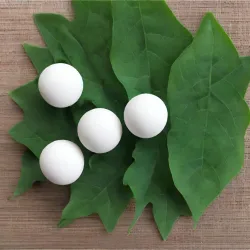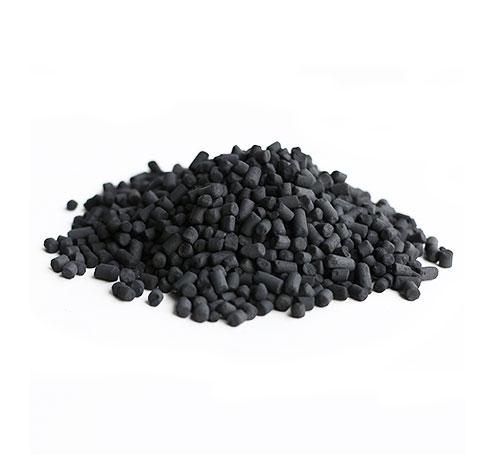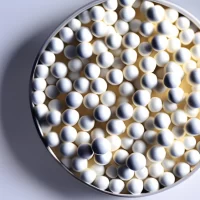A molecular sieve is a vital material in industrial adsorption. It ensures efficient gas separation, moisture control, and purification. Its structured pore system allows for selective adsorption, making it essential in various industries.
As a molecular sieve desiccant, it is widely used in pharmaceuticals, petrochemicals, and natural gas processing to trap moisture and enhance product stability effectively.
The molecular sieve adsorbent plays a key role in removing impurities like CO₂ and sulfur compounds, improving the quality of gases and liquids in refining and air separation processes.

Contents
- 1 Understanding Molecular Sieves: Composition and Mechanism
- 2 Types of Molecular Sieves and Their Industrial Applications
- 3 How Are Molecular Sieves Made?
- 4 How Much Molecular Sieves To Use?
- 5 How Does A Molecular Sieve Work?
- 6 Can Molecular Sieves Be Reused?
- 7 Market Trends and Industry Growth
- 8 Frequently Asked Questions (FAQs)
- 9 Conclusion
Understanding Molecular Sieves: Composition and Mechanism
A molecular sieve is a synthetic crystalline aluminosilicate with uniform pores that can selectively adsorb molecules based on size. These materials belong to the zeolite family and offer high thermal stability, exceptional adsorption efficiency, and reusability.
The fundamental principle behind a molecular sieve desiccant is its ability to retain water molecules within its microporous structure while allowing other gases to pass through. This property is superior to conventional drying agents like silica gel and activated alumina.
As a molecular sieve adsorbent, it is crucial in refining processes by removing impurities, controlling humidity, and facilitating gas separations.
Molecular sieves are commonly used for various industrial applications, including gas separation, dehydration of gases and liquids, and purification of substances. The most common types of molecular sieves are zeolites, which are crystalline aluminosilicate minerals with well-defined pore structures.
Key characteristics and applications of molecular sieves include:
Pore Size: Molecular sieves have uniform and well-defined pore sizes, typically measured in angstroms (Å). The size of the pores determines the type of molecules that can be adsorbed.
Gas Separation: Molecular sieves are used to separate gases based on their molecular sizes. For example, they can be employed to remove water vapor from natural gas or separate different components of air.
Dehydration: Molecular sieves are effective desiccants, meaning they can remove water molecules from liquids or gases. They are often used to dry solvents or gases in various industrial processes.
Adsorption: The selective adsorption capacity of molecular sieves makes them useful for removing specific molecules or impurities from mixtures.
Regeneration: Molecular sieves can be regenerated by removing the adsorbed molecules, usually through heating. This allows the material to be reused multiple times.
Types: While zeolites are a common type of molecular sieve, other materials, such as activated carbon and silica gel, can also exhibit molecular sieve properties.
Overall, the ability of molecular sieves to selectively adsorb molecules based on size and shape makes them valuable in a wide range of industrial applications where precise separation and purification are required.
Types of Molecular Sieves and Their Industrial Applications
1. Molecular Sieve Desiccant: Unparalleled Drying Performance
Molecular sieves are the most efficient desiccants, outperforming traditional drying agents. Their key applications include:
- Natural Gas and LNG Processing: Removes moisture and CO₂ before liquefaction to prevent pipeline corrosion.
- Pharmaceutical Packaging: Extends the shelf life of moisture-sensitive drugs by maintaining a dry environment.
- Compressed Air Drying: Ensures optimal air quality in industrial applications by eliminating residual moisture.
The most widely used molecular sieve desiccants are 3A, 4A, and 5A, each with specific pore sizes optimized for different drying needs.
2. Molecular Sieve Adsorbent: Effective Purification and Separation
Beyond moisture adsorption, molecular sieves act as selective adsorbents for removing impurities and separating chemical components. Their significant uses include:
- Air Separation Units (ASUs): Essential in oxygen and nitrogen production by selectively adsorbing nitrogen from air.
- Petrochemical Refining: Eliminates sulfur compounds and hydrocarbons, enhancing fuel quality.
- Hydrogen Purification: Used in Pressure Swing Adsorption (PSA) systems to extract high-purity hydrogen.
The 13X molecular sieve is particularly effective in CO₂ removal, making it a preferred choice in gas purification.
How Are Molecular Sieves Made?
Molecular sieves are typically made using synthetic processes to create materials with well-defined and uniform pores. The most common type of molecular sieve is based on zeolites, which are crystalline aluminosilicate minerals. Here is a general overview of how molecular sieves, particularly zeolites, are made:
Choice of Raw Materials:
- Aluminosilicate Sources: Aluminum and silicon compounds are used as the primary raw materials. Common sources include alumina (aluminum oxide) and silica (silicon dioxide).
Gel Formation:
- The raw materials are combined to form a gel. The gel composition is crucial in determining the properties of the final molecular sieve.
Crystallization:
- The gel undergoes a controlled crystallization process. This step is essential for the formation of the crystalline structure with uniform pores. The crystallization conditions, such as temperature and time, are carefully controlled to achieve the desired properties.
Template Molecules:
- Template molecules are often included in the synthesis process. These molecules help guide the formation of the pore structure and are later removed during activation.
Washing and Drying:
- The resulting crystalline material is washed to remove impurities and any remaining template molecules. After washing, the material is dried.
Activation:
- The dried material undergoes an activation process, which typically involves heating. This step removes the template molecules and any remaining water, creating the porous structure characteristic of molecular sieves.
Ion Exchange (Optional):
- In some cases, ion exchange may be performed to modify the properties of the molecular sieve. This involves replacing certain ions in the structure with other ions to achieve specific characteristics.
Grinding and Sizing:
- The final molecular sieve product may be ground into a powder or shaped into beads or pellets, depending on the intended application.
Quality Control:
- Quality control measures are implemented to ensure the final product meets the required specifications. This may include testing the pore size distribution, surface area, and other relevant properties.
It's important to note that the specific details of the synthesis process can vary based on the type of molecular sieve being produced and the desired properties for a particular application. Different raw materials, templates, and synthesis conditions can be used to tailor the molecular sieve to specific industrial needs.
How Much Molecular Sieves To Use?
The amount of molecular sieves to use in a particular application depends on several factors, including the type of molecular sieve, the specific properties of the substances being treated, and the desired level of purification or separation. Here are some considerations to help determine the amount of molecular sieves to use:
Capacity of Molecular Sieves:
- Molecular sieves have a finite capacity for adsorbing molecules. The amount they can adsorb is influenced by factors such as the pore size, surface area, and the nature of the molecules being adsorbed. Understanding the capacity of the chosen molecular sieve is crucial.
Mixture Composition:
- The composition of the mixture you are treating will impact the amount of molecular sieves needed. For example, suppose you are separating a gas mixture. In that case, the concentrations of different gases will affect the required amount of molecular sieves.
Desired Purity Level:
- The level of purity or separation you want to achieve will influence the amount of molecular sieves needed. If a higher level of purity is required, you may need to use more molecular sieves or optimize the process conditions.
Flow Rate and Contact Time:
- The flow rate of the substance through the molecular sieve bed and the contact time with the molecular sieves are essential factors. Higher flow rates or shorter contact times may require a larger quantity of molecular sieves to achieve effective adsorption.
Regeneration Considerations:
- If the molecular sieves need to be regenerated periodically, the amount used may depend on the frequency of regeneration. Some applications may allow for higher loading of molecular sieves with more frequent regeneration, while others may require larger quantities with less frequent regeneration.
Experimental Testing:
- Conducting small-scale experimental tests can help determine the optimal amount of molecular sieves for a specific application. This involves running trials with different quantities of molecular sieves to assess their effectiveness in achieving the desired separation or purification.
Manufacturer Guidelines:
- Manufacturers of molecular sieves often provide guidelines or recommendations for usage based on the type of molecular sieve and intended application. These guidelines can serve as a starting point for determining the appropriate amount to use.
It's important to note that the optimal amount of molecular sieves can vary widely depending on the specifics of each application. Experimentation, combined with a good understanding of the properties of the molecular sieves and the substances being treated, is often necessary to determine the most effective quantity for a given situation.
How Does A Molecular Sieve Work?
The operation of a molecular sieve is based on its ability to selectively adsorb molecules depending on their size, shape, and polarity. The term "molecular sieve" implies a filtering or sieving process where specific molecules are allowed to pass through the sieve while others are selectively retained. Zeolites are a common type of molecular sieve, and their operation can serve as an example of how molecular sieves work:
Pore Structure:
- Molecular sieves, particularly zeolites, have a well-defined and uniform pore structure. The size of these pores is critical and is typically on the order of angstroms (Å). The uniformity of the pores is crucial for the selective adsorption of molecules.
Adsorption:
- When a mixture of gases or liquids comes into contact with the molecular sieve, specific molecules are adsorbed into the pores of the material. The size, shape, and polarity of the molecules influence the adsorption.
Selective Adsorption:
- The pores of the molecular sieve selectively adsorb molecules that are small enough to fit into the pores while excluding larger molecules. This selectivity is what allows molecular sieves to separate components of a mixture based on size.
Desorption:
- Over time, as the molecular sieve becomes saturated with adsorbed molecules, it may reach a point where it needs to be regenerated. Regeneration involves removing the adsorbed molecules from the sieve. This is often done by applying heat to drive off the adsorbed molecules, a process known as desorption.
Regeneration:
- The molecular sieve can typically be regenerated and reused multiple times. The desorption process, often involving heating, removes the adsorbed molecules from the pores, restoring the molecular sieve's adsorption capacity.
Specific Applications:
- Depending on the specific application, molecular sieves can be used for various purposes, including:
- Gas Separation: Molecular sieves can selectively adsorb certain gases, allowing for the separation of components in gas mixtures.
- Dehydration: Molecular sieves are effective in removing water molecules from liquids or gases, making them valuable in drying processes.
- Adsorption: They can be used to remove impurities from liquids or gases through selective adsorption.
- Depending on the specific application, molecular sieves can be used for various purposes, including:
In summary, the working principle of a molecular sieve involves the selective adsorption of molecules based on the size and shape of their pores. This property makes molecular sieves valuable in a wide range of industrial applications where precise separation and purification are essential.
Can Molecular Sieves Be Reused?
Yes, molecular sieves can often be regenerated and reused multiple times. The regeneration process involves removing the adsorbed molecules from the molecular sieve, restoring their adsorption capacity and allowing them to be used again. The ability to regenerate and reuse molecular sieves is one of the advantages that make them cost-effective in various industrial applications.
The regeneration process typically involves applying heat to the molecular sieve. This heat drives off the adsorbed molecules, a step known as desorption. The specific conditions for regeneration, such as temperature and duration, depend on the type of molecular sieve and the substances being adsorbed. In some cases, other methods, such as purging with inert gases, may also be used in conjunction with or instead of heating.
It's important to note that the regeneration process may cause some changes in the properties of the molecular sieve over time. For example, repeated regeneration cycles could lead to a gradual decrease in performance or changes in pore structure. Therefore, the number of times a molecular sieve can be effectively regenerated depends on factors such as the type of molecular sieve, the application, and the severity of operating conditions.
Manufacturers often provide guidelines for the regeneration of their specific molecular sieves, and these guidelines should be followed to ensure optimal performance and longevity. Regular monitoring and testing of the molecular sieve's properties during its lifecycle can also help determine when regeneration is necessary and how many regeneration cycles are feasible.
Market Trends and Industry Growth
The global molecular sieve market is projected to witness steady growth, driven by rising energy demands, environmental regulations, and advancements in adsorption technology.
- Market Value in 2024: USD 4.3 billion
- Expected Growth Rate (2025-2033): CAGR of 3.9%
- Key Market Players: Honeywell UOP, Arkema, Tosoh Corporation, and Zeochem
Asia-Pacific currently dominates the market with a 33.4% share, owing to rapid industrialization and increasing demand for high-efficiency adsorbent materials.
Frequently Asked Questions (FAQs)
1. How does a molecular sieve desiccant compare to silica gel?
Unlike silica gel, which absorbs moisture based on surface area, a molecular sieve desiccant utilizes uniform micropores to selectively trap water molecules, making it more efficient in low-humidity conditions.
2. Can molecular sieves be regenerated?
Yes, they can be regenerated by heating at 175°C to 315°C, effectively desorbing trapped moisture and impurities for reuse.
3. What is the best molecular sieve adsorbent for air separation?
The 13X molecular sieve is ideal for separating nitrogen from oxygen, ensuring high-purity oxygen production.
4. How are molecular sieves used in petrochemical processing?
They remove contaminants such as sulfur compounds, CO₂, and heavy hydrocarbons, improving the quality of refined products.
5. Which molecular sieve is best for ethanol drying?
The 3A molecular sieve desiccant is the most effective for ethanol dehydration, as it selectively removes water without adsorbing ethanol molecules.
Conclusion
As a molecular sieve, this material continues to shape adsorption technologies, offering high efficiency and durability in industrial applications.
The molecular sieve desiccant remains the most effective solution for moisture control, ensuring optimal performance in critical sectors.
As a molecular sieve adsorbent, it supports gas separation and purification, helping industries improve product quality and meet environmental standards.




